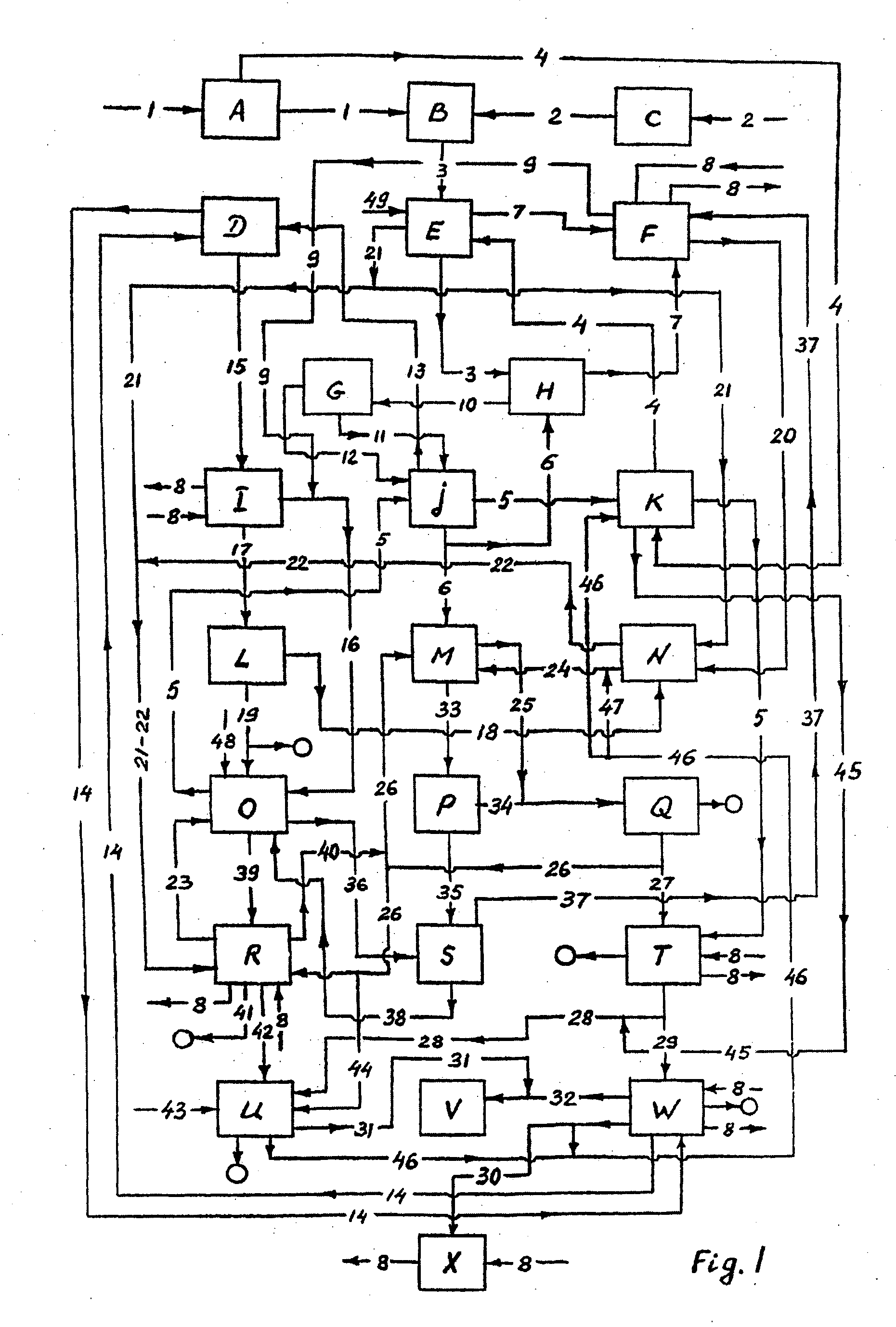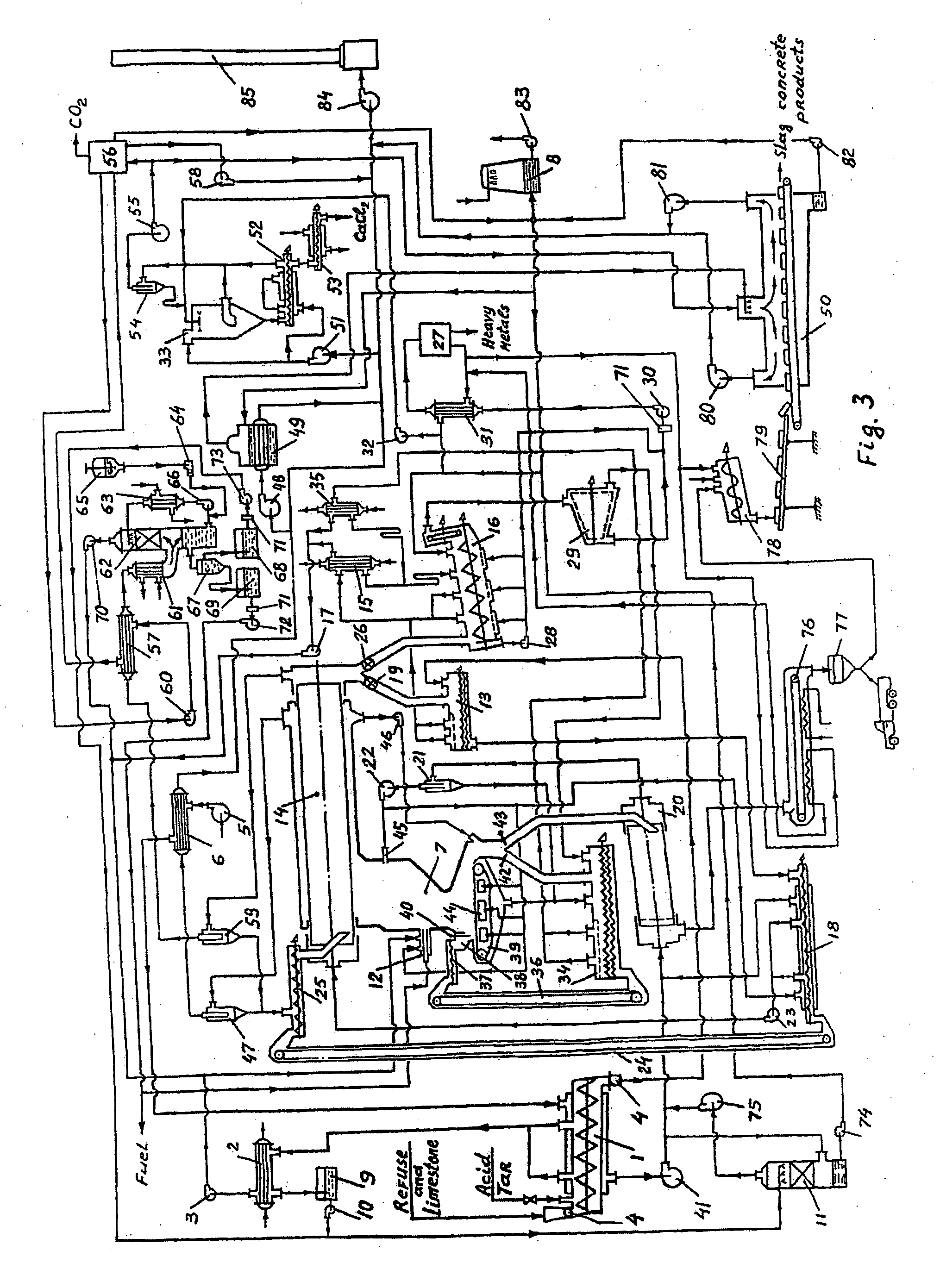Problem of
pollution of cities by waste products of the its vital activity and its solution appeared extremely complex scientific—technical and social—economic task.
However, it extremely laborious, epidemically and toxically dangerous process allowing to sort no more than 30% of refuse, as its big part is impossible to separate (Katys M. Dumps of Household Waste Products and Incinerate Factories—Sources of Dioxins. Nov. 25, 2002 20:21 / www.svoboda.org).
Experience of Germany has shown, that recycling is economically expedient only for such materials as
ferrous metals, aluminum, glass depending on local conditions, probably, a paper and is completely unacceptable for plastic, packing materials, newspapers, waste products of
electronics, linoleum, etc.
It is necessary to note that such solution of a problem is not satisfactory as the solid rests of pyrolysis contain
heavy metals and, hence, are not suitable for industrial use and a burial place also demand.
Besides extraction oil from ground deposits it is inexpedient in connection with high expenses and insignificant quantity of an
oil phase: on the average 5-8%.
Thus, however, the questions associated to protection of an environment from
pollution by
heavy metals, polychlorinated dibenzodioxins, -furanes and -biphenyls also are not solved.
In connection with the raised content of heavy metals in
sludge deposits of
sewage all these technologies result in reception of extremely dangerous slag and ashes which is demand a burial place.
Besides chlororganic compounds contained in solid waste result in environmental
contamination by polychlorinated dibenzodioxins, -furanes and -biphenyls.
However, burning of solid waste with the purpose of reception of heat to manufacture the
electric power results in the even greater environmental
contamination.
It speaks that the
electric power consumption is not constant has daily and seasonal peaks that accordingly results in fluctuations of loading of combustion chambers of garbage
incineration boilers and, as a result leads to incompletely burn of waste products and to the even greater emission of harmful substances with
chimney gases, slag, ash and
sewage.
For only technical reasons (low-
calorie fuel, ineffective generators, etc.) cost of the
electric power made on municipal refuse
incineration plants cannot compete to cost of the electric power on
heat power stations.
On laws in force for stabilization of the market to consumers of it is obliged to sell for 2 cents for 1 kilowatt that gives enormous losses for refuse
incineration plants and in a combination to necessity of a burial place for slag and ash does these plants absolutely unprofitable, financial forecasts for their development are extremely adverse (The Wall Street Journal. Aug. 11, 1993, p. A1-A2).
In the same cases when gas of pyrolysis is exposed to clearing of acid gases such as chloride
hydrogen (HCl), economically process becomes expensive because of application of the expensive equipment and using expensive caustic or calcinated soda and environmental
contamination by heavy metals is not eliminated.
Such process does not improve an ecological situation whereas presence of air and availability of
chlorine organic substances in refuse in combination with high temperature results in intensive formation of dioxins furanes and biphenyls.
As a result it turns to synthesis gas—a mix of
hydrogen,
methane, carbonic
oxide,
carbon dioxide, water steam,
nitrogen oxides and
sulfur, the solid rest—
coke, pieces of
inorganic materials,
lime,
cement, glass and slag which are proposed to be poured out from a reactor in sealed bunkers and forms without the instruction of their further use and wasted melts of salts and
metal which regeneration are extremely complex and power-intensive process requiring besides the significant consumption of various reagents.
It is necessary to note also that the specified processes do not provide removing of heavy metals and their salts from the solid rest of pyrolysis therefore the further application of slags for manufacture of building materials and designs is impossible, special measures on their recycling or a burial place are necessary.
Therefore, though
thermal methods allow to reduce considerably volume of waste products, thus ashes even more dangerous to an environment and the slag requires special measures on recycling or a burial place are formed (Yufit S. S. Incinerate Factories—Rubbish Heap in the
Sky.
However, such technology requires preliminary
neutralization of waste products for what a plenty of chemical reagents is necessary.
A number of the substances making waste products, for example, sulphur-containing can cause degradation of a
cement stone that results in
diffusion of contamination into an environment.
Besides, toxic metals in the certain conditions can be washed away from blocks by rains, for example, at change of acidity of rain water according to “weather conditions” (Yufit S. S. Incinerate Factories—Rubbish Heap in the
Sky.
Commercially such condition cannot be executed as structure of municipal refuse and accordingly slag is not constant.
Thus, even the advanced technologies do not provide manufacture of non-polluting, suitable for slag further use.
However, such way of reduction of a
production cycle, increase physico-mechanical parameters of products provides significant expenses for construction and operation of boiler-houses, the big charge of the steam reaching 1,2T on 1 m3 concrete and, accordingly, of water and fuel (Dmitrovich A. D. Heat and.
All these processes, however, lead to environmental contamination by toxic salts of heavy metals and are not suitable for
processing the waste products containing
polyvinyl chloride and other
chlorine-containing plastics in connection with formation of polychlorinated dioxins, furanes and biphenyls.
These methods allow to lower considerably emission of
nitrogen oxides, however, thus its require careful preliminary sorting of municipal refuse because the methods are unsuitable for burning the waste products containing linoleum, plastic, batteries, accumulators and other materials including chlororganic substances and heavy metals as thus slag and final chimney gases contain highly toxic dioxins, furanes,
biphenyl and heavy metals.
In case of submission highly the damp or frozen waste products, and also waste products of variable
humidity burning becomes unstable, chemical incompletely burn waste products and, accordingly, the charge of fuel and emission of harmful substances in an
atmosphere and with slag sharply grows.
However, heating the
bunker with waste products by an open
flame of burners local overheating and, accordingly, premature
decomposition or ignition of waste products is possible.
Besides final chimney gases of burners without recycling of heat are dumped directly in an
atmosphere what addition ally pollute an environment and lead to the overexpenditure of fuel.
However, it is impossible, to process of the waste products, containing salts of heavy metals and
chlorine organic substances as it is impossible to prevent dump them into an
atmosphere and with slags polychlorinated dioxins, furanes, biphenyls and salts of heavy metals, and the condensate received after cooling of gas-vapor mixture of a dryer in needed complex clearing before dump into the water drain.
Drying by final chimney gases reduces the
discharge of fuel, however, direct contact of environs results in pollution of chimney gases by feel unwell smelling and other harmful substances which then together with chimney gases are dumped in an atmosphere because the
cyclone established before a chimney, entraps only a dust and
soot substances.
And, at last, high temperatures result in increase volatility of components that lead to increase in emissions of dangerous heavy metals.
Thus, the method of reduction of concentration of dangerous substances by afterburning has no substantiation and is not capable reduce emission of products of incomplete combustion and heavy metals.
However, this way is suitable only for processing of industrial residue with the content of dry substances no more than 10% when formed ashes is easily kibble by spheres and then is eliminating on screens.
At processing of municipal waste products stable fine
grind formed slag and, accordingly, its separation on screens from spheres is impossible that will result in an often stop of the equipment for cleaning.
Besides at processing the waste products containing chlororganic substances and heavy metals, environmental contamination by dioxins, furanes, biphenyls and salts of heavy metals is inevitable.
Besides, to adjust duration of
drying and final
moisture content of dried up refuse is practically impossible.
Thereof into reactor of pyrolysis enters non-uniformly dried up waste products that, accordingly, results in the overexpenditure of fuel in pyrolysis process.
Thus, the problem of preliminary
drying municipal and similar waste products before its delivery for thermal processing has no satisfactory solution.
These processes, however, lead to environmental contamination by toxic salts of heavy metals and are not suitable for processing of waste products of plastic, despite that limestone or
dolomite could neutralize discharged at
decomposition of plastic
hydrogen chloride (HCl).
(1358-1376° F.) that results in
sintering and lumping of processable waste products, to sharp decrease of efficiency of contact of environs and in a combination to weak hashing does process of
neutralization of
hydrogen chloride absolutely not effective and, hence, practically excludes an possibility of processing of plastic.
As
partial pressure of steams these salts is not enough, they in weight of chimney gases are carried away from the furnace in a chimney, and, due to low concentration to allocate them from gases it is practically impossible though their total represents a vital issue.
Process of preliminary drying of initial municipal refuse is not anticipated.
Thus, presence of a
moisture in refuse results in increase in time of presence of waste products in the furnace of pyrolysis that essentially reduces its productivity, results in the overspend of fuel and, accordingly, reduction of an out put of commodity fuel.
Thus, cooling of slag by air which temperature is below specified will result in glass-transition and slagging of slag cooler and, accordingly, in stop of work of all factory.
Slag cooling at higher than the specified temperature the significant part of heat is losing what results in the overspend of fuel in
combustion chamber and, accordingly, to reduction of an output of commodity fuel.
The washed out solid products of pyrolysis after a
scrubber have
high humidity that causes the big consumption of hot slag for their drying in the mixer before feeding on burning.
Manufacture of finished articles from slag is not stipulated what considerably reduces
economic parameters of work of a
plant.
At use of limestone during pyrolysis of municipal refuse alongside with its interaction with
hydrogen chloride it is impossible to exclude and interaction with organic acids.
Due to
evaporation of a plenty of water in dryers of calcium chloride and dump water steams together with final chimney gases into an atmosphere the given technology has no sewage, however, the significant amount of
fresh water is needed on additional adding water to turnaround
system of cooling and cooling of slag before its sending to the
consumer.
Their complex and expensive preliminary clearing of harmful
impurity (acids, sulfuric compounds, etc.) is necessary for producing of liquid
carbonic acid from gases of pyrolysis by chemical sorbents with the subsequent clearing gas in electrofilters or by compressing up to high pressures with the subsequent condensation and separation of
impurity that does production of
carbonic acid economically not the favorable enterprise and, accordingly, does not reduce emission of
carbon dioxide (CO2) into an atmosphere.
The joint burning in combustion chamber
liquid fuel, noncondensed gases of pyrolysis and solid products of pyrolysis is executed not rationally what leads to significant emissions of
nitrogen oxides in an atmosphere.
Such complex design of the furnace creates difficulties while in service including to stops on cleaning and repair.
 Login to View More
Login to View More 


